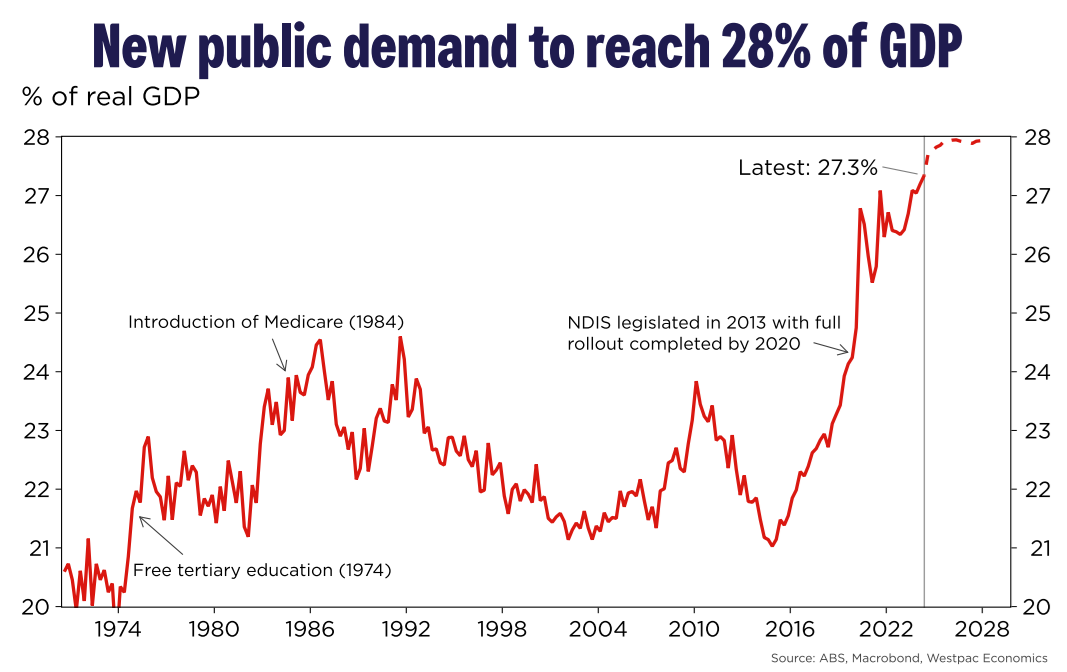Economist warns this could dampen productivity growth and prolong inflationary pressures

Australia is undergoing a significant economic shift, driven by a sharp increase in public spending, comparable to the structural changes experienced during the mining investment boom of the 2000s, according to a bank economist.
Pat Bustamante (pictured above), senior economist at Westpac, forecasts that public expenditure will reach 28% of real GDP by the end of 2025, up from its pre-pandemic average of 22.5%. He noted that the economic shift has broad implications, particularly for productivity.
“Measured labour productivity has been unusually volatile due to disruptions caused by the pandemic and the growth in public spending,” he said, adding that labour productivity growth is expected to remain sluggish as the economy transitions towards a larger public sector.
This shift involves moving towards industries like health and disability support, which are harder to measure in terms of productivity and often face regulatory constraints.
“The mining sector can double its output through more investment, but it’s much harder to achieve this in sectors like care work,” Bustamante said in a Westpac economic report. 
As public spending peaks, the compositional effect on productivity is expected to diminish, with productivity likely returning to pre-pandemic trends. Labour productivity outside of the mining and public sectors has already shown signs of recovery, growing by 1.7% year-on-year in the June 2024 quarter.
The Reserve Bank of Australia (RBA), however, remains concerned about rising wages and stagnant productivity growth, which could keep underlying cost pressures and inflation elevated. While public services such as education and healthcare are subsidised and won’t fully pass through to consumer prices, the indirect effects of increased public spending are still significant.
“Increased public spending, especially in capacity-constrained sectors like health, disability support, and construction, is competing with the private sector for resources, prolonging the disinflationary process,” Bustamante said.
Since 2019, the underlying cost base in the construction sector has risen by 36%, compared to 21% in the non-mining sector.
Recent data from the June quarter National Accounts suggests that the private sector is under strain, with limited prospects for immediate monetary support from the RBA. As a result, Westpac has lowered its 2026 growth forecast by one percentage point, with short-term growth expected to be more reliant on public demand.
“There is a risk that over the medium to longer term, we head back to the pre-pandemic situation where growth in private demand was anaemic and we went through a period of wage stagnation, which saw underlying inflation undershoot the RBA’s inflation target,” Bustamante said.
Want to be regularly updated with mortgage news and features? Get exclusive interviews, breaking news, and industry events in your inbox – subscribe to our FREE daily newsletter. You can also follow us on Facebook, X (formerly Twitter), and LinkedIn.



